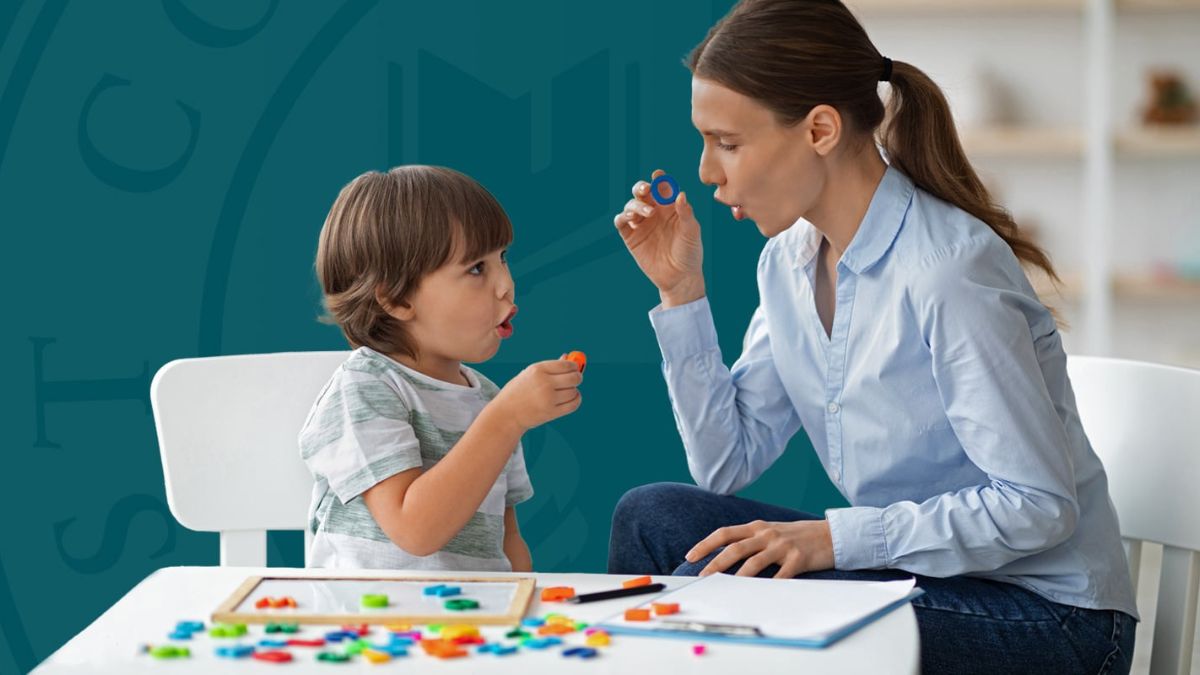Health
The Science and Benefits of Salt in Everyday Use

Understanding the Basics of Salt
Since prehistoric times, salt—a mineral of sodium and chloride ions—has been essential to human civilization. Its uses have evolved dramatically, from preserving food and seasoning meals to serving a vital role in religious and healing rituals. In today’s world, salt is ubiquitous—in various products, including foods, household goods, and personal care items. Its composition allows it to dissolve in water, making it an invaluable resource in culinary and industrial applications. The significance of salt extends beyond mere functionality; it has historically held economic importance, even serving as currency in Roman times.
Various Salt Types and Their Special Qualities
The world of salt is rich with variety, each type bringing its unique flavor and texture to the table. Often fortified with iodine, table salt is a staple in most households, preventing iodine deficiency among populations. In contrast, sea salt, harvested through the evaporation of seawater, retains essential trace minerals that can enhance culinary experiences. Meanwhile, the visually appealing Himalayan pink salt, mined from ancient sea beds, offers a subtle flavor and striking color that can elevate the presentation of any dish. Beyond aesthetics and flavor, specialty salts like these cater to the gastronomic and health-conscious alike, offering myriad options for enhancing taste and nutrition. Discover the versatile nature of salt with offerings like Clarity Salt, which showcases the breadth of this essential mineral.
The Role of Salt in Human Health
Salt is pivotal in maintaining human health, facilitating key bodily functions such as muscle contraction and nerve transmission. Although it aids in fluid regulation and dehydration prevention, excessive use has been connected to health issues like heart disease and hypertension. The Centers for Disease Control and Prevention (CDC) emphasizes managing sodium intake to support cardiovascular health. Striking the right balance can be challenging, given the abundance of sodium in processed and packaged foods. Making informed dietary choices—such as cooking at home, reading labels, and opting for low-sodium options—can significantly impact overall well-being. A diet mindful of sodium supports heart health and reduces the risk of associated conditions.
Culinary Secrets: How Salt Transforms Food
In the culinary world, salt is revered for its role in enhancing flavors and its ability to transform ingredients. A little salt can bring out ingredients’ natural flavors, balance a dish’s acidity, and increase the sweetness of desserts. Chefs understand that the timing of adding salt can significantly affect the outcome—seasoning vegetables early in the cooking process, for example, can help retain moisture and intensify flavors. Furthermore, different types of salt can offer distinct textural variations: flaky sea salt adds a delightful crunch, while acceptable table salt blends seamlessly into batters. Mastering the art of seasoning allows cooks to elevate any meal, unlocking complex flavors and creating memorable dining experiences for those who partake.
Innovative Uses of Salt in Daily Life
Salt’s usefulness extends far beyond the kitchen. Its natural abrasive and deodorizing properties make it an excellent multi-purpose cleaner, tackling tough stains and lingering odors. In personal care, salt is a key ingredient in exfoliating scrubs and soothing bath soaks, promoting skin health and relaxation. Beyond its traditional roles, salt is used in humidifiers to maintain balanced air moisture levels, enhancing comfort and well-being in living spaces. Creative applications of salt continue to surface across industries, showcasing its adaptability and importance in everyday life. Explore resources such as scientific literature on the subject for a deeper dive into salt’s myriad uses and benefits.
Environmental Benefits of Salt-Based Solutions
Sustainability is gaining momentum in various sectors, and salt is integral in eco-friendly solutions that minimize environmental impact. Biodegradable plastics and natural preservatives leveraging salt’s properties illustrate its application in reducing synthetic chemical use. Moreover, salt’s efficacy in de-icing roads during winter months remains common, though efforts continue to innovate lesser environmental impact methods. The exploration of salt-based technologies in water treatment and renewable energy further supports its role in a sustainable future.
Tips for Optimal Salt Consumption
Maintaining a balanced salt intake is fundamental to protecting one’s health, and understanding how to incorporate salt mindfully into your diet can help you achieve this balance. Some effective strategies include:
- Utilizing herbs and spices as flavorful alternatives to salt.
- Choosing whole, unprocessed foods that inherently contain less sodium.
- Selecting low-sodium products, especially in canned or packaged foods.
- Reading nutrition labels meticulously to understand hidden sodium content.
By adopting these practices, individuals can enjoy flavorful meals without compromising health, promoting an optimal balance between taste and nutrition.
Emerging Trends in Salt Usage
The future of salt is marked by innovation, with emerging trends continually redefining its applications. Culinary experimentation has led to the development of infused salts, enhancing flavor profiles with ingredients such as truffle, smoked wood, and citrus. In parallel, sustainable practices explore the potential of salt in reducing carbon footprints, from renewable energy applications to eco-friendly construction materials. These advancements promise exciting prospects for salt’s role in tackling modern challenges. As industries seek to revolutionize how salt is utilized, its significance continues growing.
Health
The Power of Gentle Fitness Classes for Confidence and Mobility in Later Years

Why Fitness Matters in Later Years
Maintaining fitness in later years is crucial for overall health and quality of life. Regular physical activity helps preserve muscle mass, improve balance, and maintain joint flexibility, reducing the risk of falls and injuries. Beyond the physical benefits, exercise supports cardiovascular health, aids in weight management, and promotes better sleep patterns. Staying active can also boost mental well-being by reducing stress, enhancing mood, and sharpening cognitive function, making daily tasks easier and more enjoyable.
For older adults seeking guidance and motivation, working with a certified professional can make a significant difference. Programs such as personal training Reston VA offer tailored exercise plans that accommodate individual fitness levels and goals. Personalized support ensures safe, effective routines that maximize results and help maintain independence and vitality as you age.
Gentle Fitness Classes: Options and Benefits
Tai Chi: Balance, Calmness, and Coordination
Tai Chi is a practical, gentle exercise for seniors, often referred to as “meditation in motion.” It features slow, deliberate movements and focused breathing, making it accessible to everyone. Regular practice enhances balance, flexibility, and posture, thereby reducing the risk of falls and promoting independent living as one ages.
Water-Based Exercise: Joint-Friendly and Fun
Water-based exercises, such as swimming and water aerobics, are beneficial for aging joints because buoyancy reduces impact and the risk of injury. They help individuals with osteoarthritis or mobility issues strengthen their muscles and improve their heart health without experiencing pain. These exercises support joint movement, lower blood pressure, promote heart health, and aid weight management. Group classes add social fun with music and games.
Strength Training: Energy, Balance, and Independence
Strength training helps seniors counteract muscle loss with simple exercises, such as chair squats and wall push-ups, that improve movement, balance, posture, and overall energy. Regular, guided classes ensure safety, motivation, and progress, leading to better ability and confidence to enjoy activities.
The Social and Emotional Impact of Group Classes
Participating in group fitness classes greatly boosts social involvement and emotional health among seniors. These classes not only improve physical health but also reduce loneliness by building bonds among peers with similar objectives. The friendship and camaraderie fostered encourage ongoing participation and strengthen a sense of community. The encouraging environment motivates members, and social events centered around fitness add extra meaning to their lives outside the gym.
Getting Started Safely
Begin exercising with guidance from a doctor or trainer, especially if you have health concerns. Safety is key, so consult with an expert to plan your activity. Community centers and gyms typically offer beginner classes for seniors, featuring trained instructors who can modify exercises to accommodate different mobility levels. Start slowly, pay attention to how your body responds, and keep a consistent routine. Gentle activities, such as Tai Chi, yoga, or water aerobics, can improve your health, foster social connections, and help you appreciate nature. Wear comfortable clothing, stay well-hydrated, and celebrate your progress, no matter how small.
Conclusion
Embracing gentle fitness classes in later years provides benefits that extend far beyond the physical. These programs support mobility and independence, enrich social lives, strengthen emotional health, and help preserve confidence for whatever challenges or adventures the future may hold. No matter your current fitness level, there’s a class or activity that can help you progress—with strength, balance, and joy, making every stage of life vibrant and fulfilling.
Health
Innovative Applications of Modern Chemical Blending Technologies

Modern chemical manufacturing is experiencing a transformation propelled by advanced blending technologies. These improvements are streamlining processes, raising product quality, and prioritizing sustainability across industries. Whether it’s pharmaceuticals or agriculture, innovations in chemical blending are unlocking solutions to some of the world’s toughest challenges. Choosing the right industrial mixer is becoming critical as manufacturers face heightened demands for consistency, safety, and environmental compliance.
Empowered by digitalization, artificial intelligence, and new eco-friendly approaches, today’s chemical blending practices are radically different from those of just a decade ago. As companies strive to minimize waste and resource use, novel technologies are enabling shifts toward greener production and greater operational agility.
Advanced Mixing Systems in Agriculture
The agricultural sector is a prime example of how advanced mixing technologies yield real-world benefits. New systems incorporate turbulence-enhancing mixer designs and closed-loop controls that facilitate optimal blending of agrochemicals. These improvements ensure that inputs like fertilizers, pesticides, and micronutrients are delivered with precision, minimizing chemical runoff and environmental contamination. With digital sensors tracking pH, temperature, and nutrient loads in real time, farmers are seeing increased yields while reducing waste.
Moreover, digital control systems can automate mixing operations, allowing farmers and agronomists to focus on crop management rather than manual mixing. As sustainable farming becomes ever more critical, innovations in mixing technology act as a force multiplier, fostering food security and environmental protection.
AI and Machine Learning in Chemical Blending
Artificial intelligence and machine learning are redefining chemical blending by delivering process intelligence once unimaginable. AI-based models can predict how different chemicals will interact, optimize formulations, and rapidly simulate scenarios to identify the most effective blends. In manufacturing settings, these tools monitor key variables and make automated adjustments, ensuring consistently high-quality products and boosting operational efficiency.
The use of AI extends to preventive maintenance as well—monitoring vibrations, temperature, and output consistency can predict potential failures before they disrupt production. Importantly, intelligent blending systems can also help reduce energy usage, furthering sustainability efforts in large-scale chemical operations.
Eco-Friendly Additive Processes
As global stakeholders emphasize greener production, chemical researchers are exploring alternatives to longstanding synthetic processes. Innovations such as enzyme-catalyzed, light—driven fluorination enable the production of valuable chemicals without harsh reagents or excessive waste. This eco-friendly approach is already being applied in the manufacture of pharmaceuticals, crop care solutions, and renewable fuel additives, aligning the chemical sector with global sustainability targets.
These process improvements also support regulatory compliance by decreasing the production of hazardous byproducts. Companies pioneering such advances position themselves for growth as eco-conscious markets—and government regulations—continue to evolve.
Enhanced Mixing in Porous Media
Mixing efficiency is a constant challenge, especially in environments where liquids move through porous materials. Researchers are tackling this by adding flexible polymers to fluids, which causes elastic instabilities and creates turbulence-like mixing. The result is faster reactions, better material dispersion, and shorter mixing times, ultimately leading to greater product consistency and lower operational costs.
This technology is particularly relevant for chemical processing in soil remediation, oil recovery, and specialty manufacturing, where confined environments can impede traditional mixing methods.
Water-Based Release Systems in Composites
The composite materials industry is shifting away from solvent-based and per- and polyfluoroalkyl substances (PFAS)-containing release agents, spurred by both performance and environmental imperatives. Water-based release systems now offer equivalent—or better—performance, reducing emissions, plant odor, and clean-up complexity.
Manufacturers implementing these technologies are not only meeting stricter regulatory requirements but also enhancing worker safety and lowering costs. With demand for PFAS-free solutions rapidly increasing, water-based release systems are quickly becoming the new industry standard.
Digitalization and Cloud Computing
Digitalization is revolutionizing chemical operations at every level. By harnessing data analytics, cloud platforms, and digital twins, chemical companies can optimize production, predict equipment failures, and accelerate research and development. Cloud-connected sensors and machine learning models collect, process, and act on vast amounts of data, providing real-time visibility and improving both quality and safety.
Digital twins enable operators to run virtual simulations that test various blending conditions, minimizing downtime and maximizing output. As more chemical manufacturers invest in digitalization, industry-wide efficiency gains are expected—driving down costs while pushing up standards for quality and safety.
Conclusion
Modern chemical blending technologies are unlocking new efficiencies, supporting sustainability, and enabling previously unattainable levels of product quality across sectors. As blending systems become more intelligent and environmentally aware, industries from agriculture to advanced composites are poised to benefit. By adopting these innovations, chemical manufacturers can adapt to a rapidly changing world while remaining competitive and compliant in an era of global transformation.
Health
The Last Step That Matters Most: Building Real-World Communication After Speech Therapy

Introduction
Completing speech therapy marks a significant milestone, yet the journey doesn’t truly end once therapy sessions conclude. The ability to confidently communicate in everyday situations is, for many, the real measure of lasting progress. Applying the tools you’ve acquired in therapy can sometimes feel daunting, but mastering the final link in speech therapy means building resilience, independence, and success well beyond the clinic room.
Bridging the gap between structured practice and spontaneous conversation isn’t always straightforward. The transition requires not only persistence but also creative strategies and consistent support. By focusing on real-world communication, individuals can transform their efforts in therapy into meaningful, lifelong skills.
Bridging the Gap Between Therapy and Daily Life
Speech therapy equips individuals with a powerful foundation, but it is the real-world application that truly reinforces these accomplishments. Everyday environments—whether at home, work, or in public—provide the varied, unpredictable contexts necessary for communication growth. Practicing conversation skills outside the therapy room promotes adaptation and flexibility, enabling individuals to tailor their communication style to any situation. This adaptive approach not only builds confidence but also ensures improvements are both sustainable and relevant to daily life.
Taking proactive steps, such as planning opportunities for social interaction or seeking new experiences, can provide invaluable practice. For instance, joining a hobby group or engaging in neighborhood events introduces fresh conversational contexts while offering a safe space to stretch communication boundaries.
The Role of Support Systems
Family, friends, and colleagues have tremendous influence on the successful integration of speech therapy skills. Their encouragement provides a sense of safety and motivation, fostering an environment where communication can be practiced without fear of judgment. Transparent discussions about progress, setbacks, and personal goals strengthen relationships and reinforce the journey toward clear, confident speech.
Establishing open communication among loved ones also creates accountability and shared understanding, offering gentle reminders and positive reinforcement during daily interactions. Peer support groups, both online and in local communities, provide additional mentorship and practical advice, helping to navigate everyday communication challenges with empathy and confidence. You can learn more about the value of community participation in communication recovery in this resource from Psychology Today.
Overcoming Challenges
Navigating real-world communication often means confronting setbacks and unexpected hurdles. Triggers like unfamiliar environments, group settings, or fast-paced conversations may bring about anxiety or self-doubt. Recognizing these triggers and developing healthy coping mechanisms—such as mindful breathing or prompt clarification requests—can help manage stress and maintain composure. Celebrate small victories, as each successful conversation, no matter how brief, is a step in the right direction.
Setting realistic, incremental goals and tracking progress can demystify the transition. By breaking larger aspirations into manageable steps—like ordering food at a restaurant or joining a discussion at work—progress becomes both measurable and motivating. Remember, the process is a journey: challenges are natural, solutions are attainable, and persistence always pays off.
Embracing Continuous Learning
Language and communication skills are dynamic, evolving as individuals encounter new people, situations, and challenges. Embracing the mindset of ongoing learning ensures that growth doesn’t plateau after therapy. Regularly seeking feedback from trusted peers and remaining open to adjusting techniques fosters adaptability and long-term competence.
Staying engaged with speech enrichment opportunities—such as public speaking workshops, book clubs, or additional language courses—can keep skills sharp and relevant to changing circumstances. A willingness to try new approaches, adapt to feedback, and explore unfamiliar conversational terrain is at the heart of lifelong communication success.
Conclusion
The last step that matters most in the journey after speech therapy is transitioning skills from the clinic to the complexities of daily life. By focusing on the final link in speech therapy—integrating learned techniques into real-world communication—individuals unlock the confidence and independence essential for meaningful connection. With strong support systems, mindful strategies, and a desire for lifelong growth, this crucial step leads to enduring success in every conversation ahead.
-

 GENERAL11 months ago
GENERAL11 months agoFrom Fan Art to Original Works: The Diversity of doujindesu Creations
-

 Entertainment7 months ago
Entertainment7 months agoEnchantment & Excitement: Crafting Unforgettable Event Experiences
-

 GENERAL8 months ago
GENERAL8 months agoEngland Business Visa Requirements for American and International Citizens in 2025: A Guide for Entrepreneurs
-

 GENERAL7 months ago
GENERAL7 months agoCrossword Conundrum: The Significance of vault opener nyt crossword
-

 GENERAL9 months ago
GENERAL9 months agoLatest Trends in Men’s and Women’s Jackets for the Upcoming Season
-

 GENERAL7 months ago
GENERAL7 months agoExploring the World of nhentai.nef: A Comprehensive Guide for New Users
-

 Health11 months ago
Health11 months agoDiscovering gel ooru: The Ultimate Guide to This Unique Traditional Craft
-

 GENERAL11 months ago
GENERAL11 months agoWhy raterpoint is Revolutionizing Customer Feedback
